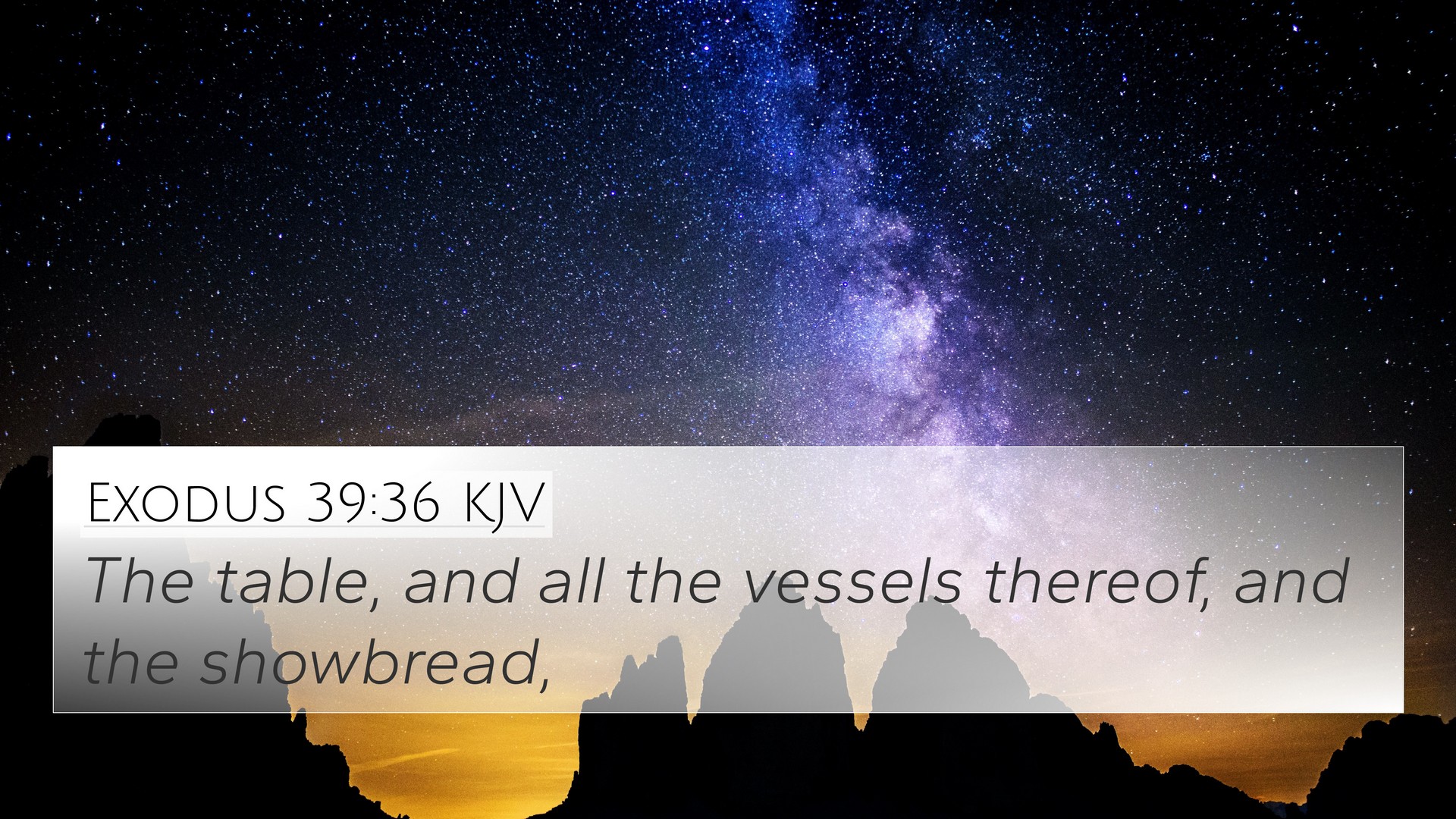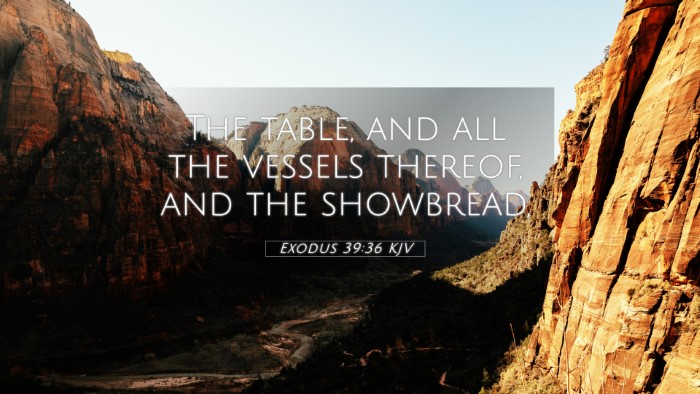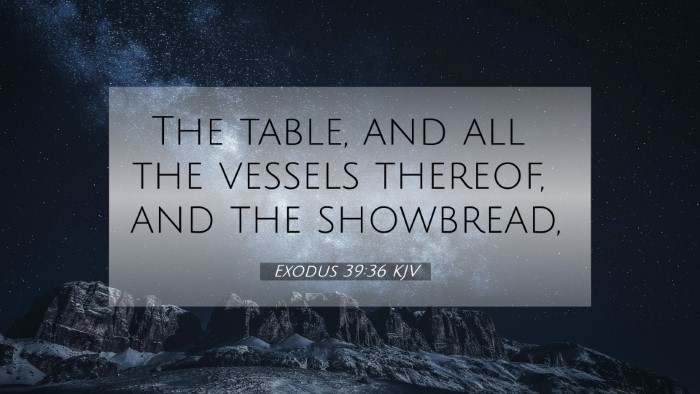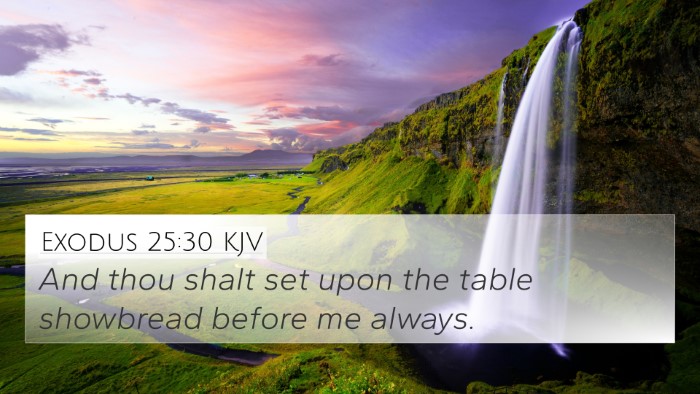Exodus 39:36 - Meaning and Interpretation
Exodus 39:36 states: “They had the charge of the chest, with the tables of the covenant, and all the instruments of the ministry of the holy place.” This verse highlights the responsibilities assigned to the priests and Levites, specifically regarding the sacred items and the service in the tabernacle.
Overview
This verse is part of the larger narrative detailing the construction and arrangement of the tabernacle and its furnishings, as commanded by God. In this context, we see a profound emphasis on the sanctity of the items used for divine worship and the meticulous care required in handling them.
Commentary Insights
The commentaries of Matthew Henry, Albert Barnes, and Adam Clarke provide multifaceted interpretations of this verse:
- Matthew Henry:
Henry emphasizes the importance of holiness in worship. He notes that the chest, or Ark of the Covenant, symbolizes God's presence among His people. By assigning the care of these sacred items to the priests, God instills a profound sense of responsibility and reverence towards the divine.
- Albert Barnes:
Barnes highlights the significance of the tables of the covenant, referring to the tablets of the Ten Commandments. He explains that their presence within the sanctuary serves as a reminder of God's laws and the covenant relationship between God and Israel. Barnes underscores the theme of obedience that the covenant demands from the people.
- Adam Clarke:
Clarke adds historical context, noting that these arrangements were not merely ritualistic but carried enduring significance. He speaks of the instruments of ministry as vital components facilitating worship and communion with God. Clarke encourages readers to recognize the transition from the physical tabernacle to the spiritual fulfillment in Christ.
Thematic Connections
This verse connects strongly to themes of holiness, covenant, and the role of priesthood in the service of God. Similarities with other scriptural texts can be observed:
- 1 Chronicles 28:12 - The specificity of God's instructions for worship.
- Hebrews 9:4 - The reference to the Ark and its contents paralleling the New Covenant understanding.
- Numbers 1:50 - The roles of the Levites in safeguarding the sanctuary.
- Psalm 78:1-4 - The passing down of God's laws and worship practices.
- Romans 12:1 - The call for believers to present themselves as living sacrifices, connecting to the sacrificial elements of ministry.
- Luke 1:5-10 - Zechariah performing his priestly service, showing continuity of priestly duty.
- Revelation 11:19 - The ultimate fulfillment of God's covenant seen in the heavenly sanctuary.
Cross-Referencing Biblical Texts
The practice of cross-referencing Biblical texts can reveal deep thematic connections and enhance understanding. Here are some practical methods to explore:
- Utilize a Bible concordance to locate similar verses and concepts.
- Incorporate a Bible cross-reference guide to link verses that share themes of worship and covenant.
- Engage in cross-reference Bible study by comparing the Old Testament foreshadowings with New Testament fulfillments.
- Explore Bible reference resources that provide insights into the cultural and historical backgrounds of scripture.
Conclusion
Exodus 39:36 enriches our understanding of the sacredness of God's covenant and the roles designated for worship. It challenges believers to appreciate the significance of reverence in worship and the ongoing relationship between God and His people through covenant promises.
Further Study
For those exploring deeper theological musings, consider examining:
- Identifying connections between the Old and New Testament as it relates to divine presence and worship.
- How to find cross-references in the Bible and connect similar themes across scripture.
- Comparative study of Pauline epistles for insights on the priesthood of believers.
- Cross-referencing Psalms with New Testament teachings about worship and sacrifice.




